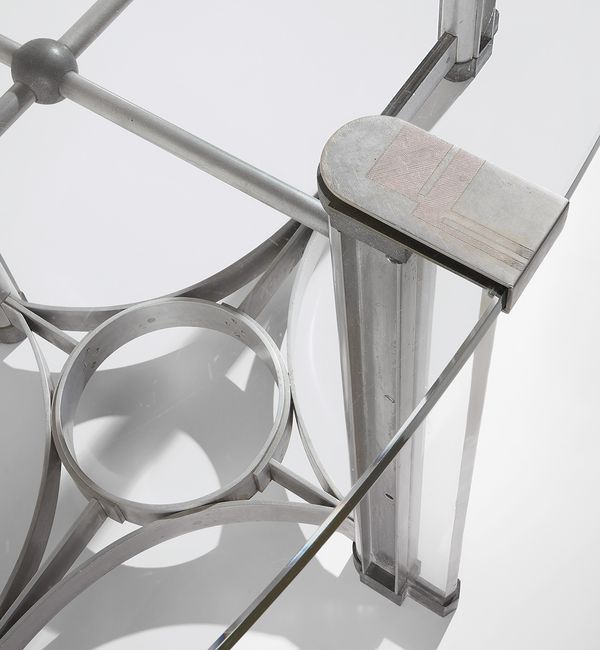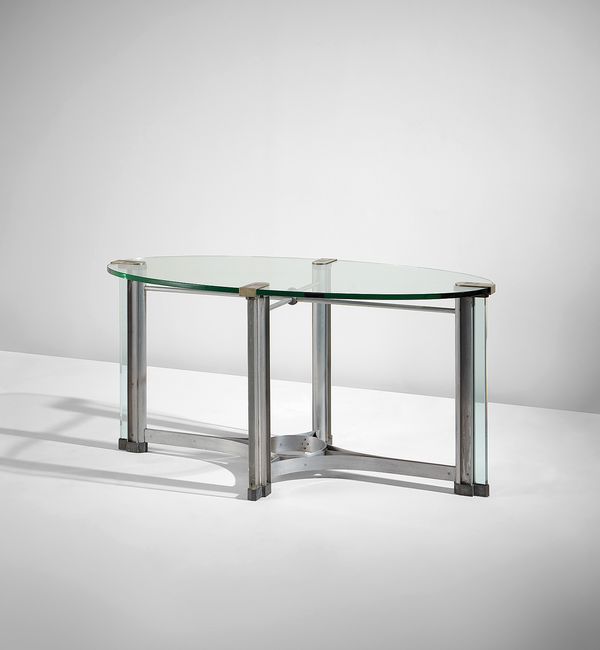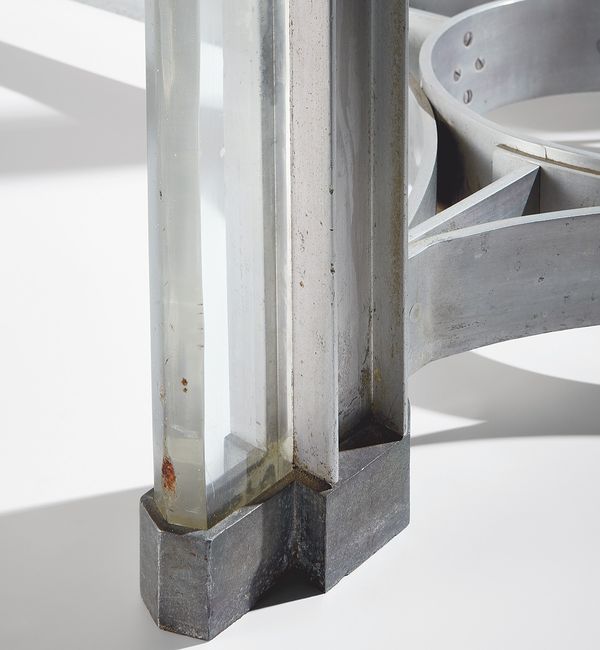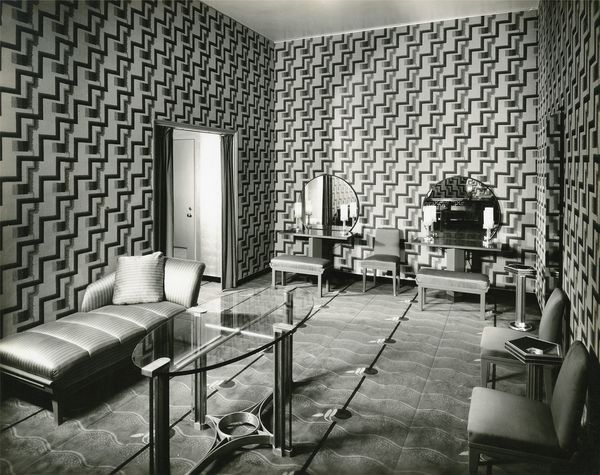Rockefeller Center was conceived shortly before the stock market crash in 1929 but survived despite diminished confidence in its ultimate profitability. Construction costs were low, and the need for employment opportunities transformed the endeavor from one of the nation's largest capitalist projects to a privately funded presage to The New Deal. Now considered one of the most important developments in New York City's planning history, Rockefeller Center was planned as an arts and entertainment destination (it was originally intended to house the Metropolitan Opera), a now familiar concept in New York real estate whose potential influence was noted by Philippa Gerry Whiting in a February 1933 article in The American Magazine of Art: "This tremendous effort to make the arts an integral part of a great city building development cannot but have its effect upon their place in the country as a whole."
The planned opera house never materialized, and instead, John D. Rockefeller Jr. joined forces with RCA to develop a different kind of performance complex that would include two theaters: the International Music Hall for vaudeville performances and the Radio-Keith-Orpheum (RKO) Roxy Theatre at Rockefeller Center, a smaller venue for film. Donald Deskey won the competition to design both interiors, but due to the size of the project, he subsequently contracted Eugene Schoen for the interior of the RKO Roxy Theatre.
Exterior of the RKO Roxy Theatre, circa 1932. Photograph by Fay S. Lincoln.
As a leader and advancer of American Modernism and a supporter of the manufacturing industry during a challenging period, Schoen was well-equipped for the job. He was once described as the "American Ruhlmann" by R. Craig Miller, as his furniture was often praised for its superior quality and similarly elegant interpretations of classical styles. There are further aspects of his successful career that parallel Émile-Jacques Ruhlmann's, and elements of his designs strongly reflect the influence of French Art Deco and the Wiener Werkstätte.
But notably, the two designers had very different production models: Ruhlmann oversaw his own ateliers while Schoen contracted production to different workshops and manufacturers of varying specialties for multiple markets. Maybe this is owed more to the fact that Paris and New York presented different contexts for design businesses. Skyscrapers might have been a popular motif in American interior design in the late 1920s, but they were also manifestations of the same changing economy that informed industrial and interior design in equal measure. Schoen also must have seen himself and his business differently than Ruhlmann did. He took a leadership role in the advancement of modernism in the United States through engaging the most talented designers and artisans in the commission for the RKO Roxy Theatre and others, his participation in influential exhibitions such as The Metropolitan Museum's "The Architect and the Industrial Arts" in 1929 and his patronage of so many manufacturers who created furniture for a diverse clientele.
The table design brings together several points of influence to striking effect.
Eugene Schoen Important table from the Radio-Keith-Orpheum (RKO) Roxy Theatre at Rockefeller Center, circa 1932
Schoen's table was created for the ladies' powder room on the second mezzanine of the RKO Roxy Theatre. The design of the room followed a formula typical of American modernist interiors of this period, where modular veneered wood case furniture and upholstery would line the perimeter and delineate sections of the room. Colored and patterned wall coverings, upholstery fabrics and carpets set the stage for table lamps, cocktail sets, tea and coffee services, ashtrays and other decorative and functional objects. These objects were typically designed in metal or glass, reflective surfaces that would stand out against their cohesive surroundings. The model interiors of this period (those documented in department store and museum exhibitions) would often feature at least one metal table, usually in a central or highly visible location.
A 1933 article in The Metal Arts describes the particular use of metal (specifically Monel or other white metals) in this context, reasoning "first that a white metal is required for its color in carrying out many schemes of interior treatment in the Modern Style, and second, that the comparative plainness of modern interiors calls for a note of accent that is so well supplied by the gleam of this metal as distinct from the effect of metals that tone-in with their surroundings." The ladies powder room of the RKO Roxy Theatre was hardly reserved in its decoration, with tan and blue Rodier fabric-covered walls, burnt orange upholstery and large circular mirrors. And yet this particular table was unmistakably its centerpiece and features prominently in the period photographs by Fay S. Lincoln.
The table design brings together several points of influence to striking effect. The more classically inspired strand of French Art Deco is demonstrated by its oval form and lower decorative stretcher. The exposed construction of the visible screws introduces a machine age vocabulary. In her thesis "Eugene Schoen: Designs for Furniture 1927-1936," Karen Rigdon points out that the table displays aeronautic motifs in the glass wing-like form of the legs and the circular stretcher, which she likens to the nose cone of an airplane. Rigdon describes this feature as representative of a turning point in the aesthetics of Schoen's work: "from the late 1920s to the mid-1930s Schoen's designs turned from a vertical orientation, characterized by the city skyline, to the impersonal sleek contours associated with high-speed vehicles." And yet for all these characteristics familiar to the period, the table was neither limited by dogmatic principles of international style modernism, nor was it born of an avant-garde movement. It was designed by a proponent of a distinctly American approach to modernism who was able to amalgamate various inspirations, and who had the latest manufacturing technologies and materials at his disposal.
The finest expressions of American modernism can be found in the metalwork of the late 1920s and early 1930s, and the metal architectural ornament, public sculpture, furnishings and interior fixtures of Rockefeller Center have come to define the aesthetic of the period in New York. The innovative combination of different types of metals in this center table is reflective of recent advancements in metalwork which were behind many of Rockefeller Center's most famous features. The table was executed by Valentine Kromm, who has been connected with the William O. Chapman Company that is believed to have produced the recently re-discovered cocktail table designed for "The Architect and the Industrial Arts" exhibition at The Metropolitan Museum of Art in the same year – sold for $100,000 at Phillips New York last December – and the famous étagère designed for Henry Root Stern circa 1929 (now in the collection of The Metropolitan Museum of Art). On the basis that his productions for Schoen are so distinguished by their elegance and precision, Kromm is believed to have produced these two related earlier works during his tenure at the William O. Chapman Company.
Schoen's table in the ladies' powder room in the RKO Roxy Theatre, circa 1932. Photograph by Fay S. Lincoln.
It may seem surprising that perhaps the finest piece of furniture in the entire theater, arguably of Schoen's entire career, was secluded in the ladies' powder room. The only other examples of Schoen's work that are comparable in quality of design and construction are those he specifically designed for important private collections or museum showcases, such as the aforementioned étagère and cocktail table. Schoen was a talented designer, but he was also a pragmatic businessman and a savvy marketer. His decisions about where to place these rare examples were intended to advertise his services and the fine craftsmanship available from his manufacturing partners. It is no coincidence that his contribution to the 1929 show at the Met was a "show window and sales alcove."
In his essay in the accompanying publication, he details his lighting schematic, in service to "[enabling] the merchant to show his goods in a dynamic way, as changing interest plays an important part in display." And so it is understandable why he chose to include this masterwork in a room designed for women to congregate, where they might be able to pause to admire the furnishings in an intimate environment. The RKO Roxy Theatre was his most elaborate showcase, and this room afforded the maximum visibility for pieces designed to attract potential patrons. Into this context, Schoen placed a table of unparalleled design and construction.
While the RKO Roxy Theatre was sadly the only building in the original Rockefeller Center to be demolished, luckily it is survived by this table so wholly representative of its time and place.




